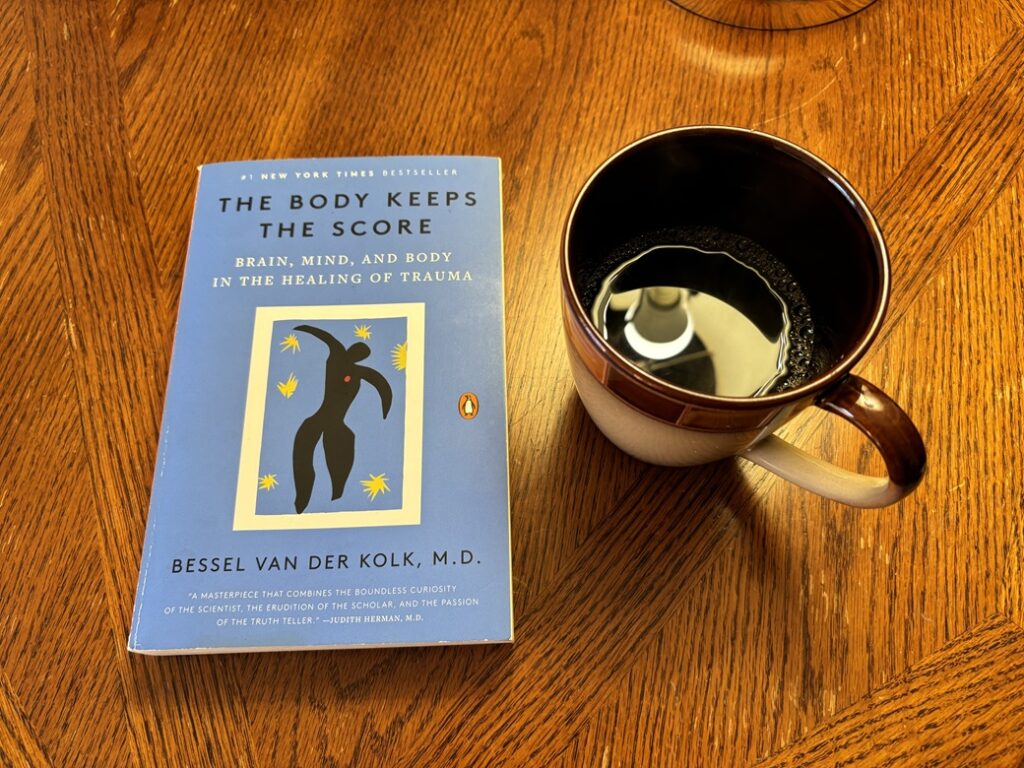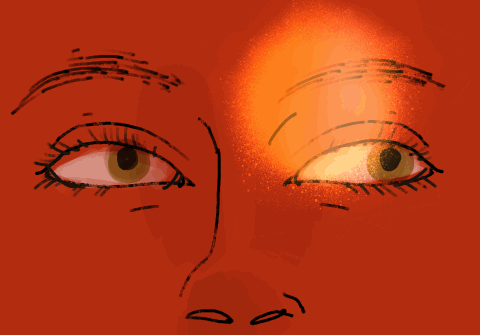Eye Movement Desensitizing Reprocessing is part thirteen of my thirteen part commentary and synopsis of The Body Keeps the Score, Brain, Mind and Body in the Healing of Trauma by Bessel van der Kolk.
1. INTRODUCTION: Childhood Trauma Causes Addiction
2. 12 Steps & 12 Traditions: Damaging Emotional Conflicts
3. Trauma Damages Left Brain Speech
4. BIOFEEDBACK: Meditative States of Consciousness
5. INTEROCEPTION: Traumatic Awareness
6. What Were You Thinking Right Before You Acted Out Your Childhood Trauma?
7. Communication is the Opposite of Trauma
8. ALEXITHYMIA: Inability to Feel Emotion
11. Lock Down Your Childhood Trauma Instead of Acting it Out
12. Final Healing: The Patient’s Internal Landscape Manifests Critical Mass of Self
13. Eye Movement Desensitizing and Reprocessing

In his 2014 bestseller, The Body Keeps the Score, Brain, Mind and Body in the Healing of Trauma, Dr. Bessel van der Kolk predicts that we will become a trauma conscious society. I think Dr. van der Kolk has been proven correct in his prediction. Trauma victims seeking a sense of safety may find many answers in The Body Keeps the Score.
Trauma seems to be the new buzzword in recovery and treatment for addiction. Dr. van der Kolk states that “Trauma victims are constantly seeking a sense of safety in one way or another.” I say he is correct again.
13. Eye movement desensitizing and reprocessing
Using Eye Movement Desensitizing Reprocessing (EMDR), it is possible for victims of trauma to attain a sense of safety by reprogramming traumatic memories that make them drink. I myself had to finally deal with the fear, rage and collapse of my life with seventeen years sober. I realized that I was a traumatized man raised by traumatized parents. My alcoholism and social isolation was one of the predictable consequences of having been traumatized. It is almost as if I have been living a dry drunk for the last seventeen years. Treatment for posttraumatic stress disorder is just now becoming of age. I am lucky to be receiving eye movement desensitizing and reprogramming therapy via Zoom.
BUY THIS BOOK: This post is derived from the Epilogue of The Body Keeps the Score, by Bessel van der Kolk
Trauma causes the mental health problem of addiction
As Dr. van der Kolk puts it, “We are fundamentally social creatures. Our brains are wired to foster working and playing together. Trauma devastates the social-engagement system. Trauma interferes with cooperation, nurturing, and the ability to function as a productive member of society. Many mental health problems such as drug addiction, start off as attempts to cope with emotions that became unbearable because of a lack of adequate human contact and support.”
My whole life I was in a fight-or-flight state of consciousness until I began to heal from my PTSD. Now I see what I was really trying to cope with. I discovered internal and external resources. By practicing yoga and meditation I was able to calm down. My caring relationship with my body is an investment in myself.
Dr. van der Kolk goes on to say that: “People who feel safe and meaningfully connected with others have little reason to squander their lives doing drugs or staring numbly at television. Aware people don’t feel compelled to stuff themselves with carbohydrates or assault their fellow human beings. However if nothing they do seems to make a difference, they feel trapped and become susceptible to the lure of pills, gang leaders, extremist religions, or violent political movements–anybody and anything that promises relief. Child abuse and neglect is the single most preventable cause of mental illness, the single most common cause of drug and alcohol abuse,, and a significant contributor to leading causes of death such as diabetes, heart disease, cancer, stroke and suicide.
Our sense of safety defines our mental health
More than anything else, being able to feel safe with other people defines mental health. Safe connections are fundamental to meaningful and satisfying lives. The critical challenge in a classroom setting is to foster reciprocity. Truly hearing and being heard. Really seeing and being seen by other people. If is important for everyone to recognize and understand the effects of trauma on children and to focus on the importance of fostering safety Children from chaotic backgrounds often have no idea how people can effectively work together.
Emotional things are emotionally known
Emotional intelligence starts with labeling your own feelings and attuning to the emotions of the people around you. Children as well as adults need to experience how rewarding it is to work at the edge of their abilities. Resilience is the product of agency: knowing that what you do can make a difference.
Trauma constantly confronts us with our fragility and with man’s inhumanity to man but also with our extraordinary resilience. Read the life history of any visionary and you will find insights and the passions that came with having dealt with devastation.
CONSENSUS PROPOSED CRITERIA FOR DEVELOPMENTAL TRAUMA DISORDER
“The goal of introducing the diagnosis of Developmental Trauma Disorder is to capture the reality of the clinical presentations of children and adolescents exposed to chronic interpersonal trauma. Thereby guiding clinicians to develop and utilize effective interventions and for researchers to study the neurobiology and transmission of chronic interpersonal violence. Whether or not they exhibit symptoms of PTSD, children who have developed in the context of ongoing danger, maltreatment, and inadequate caregiving systems are ill-served by the current diagnostic system, as it frequently leads to no diagnosis, multiple unrelated diagnosis, an emphasis on behavioral control without recognition of interpersonal trauma and lack of safety in the etiology of symptoms, and a lack of attention to ameliorating the developmental disruptions that underlie the symptoms.” –The Body Keeps the Score, pp. 349-361.



